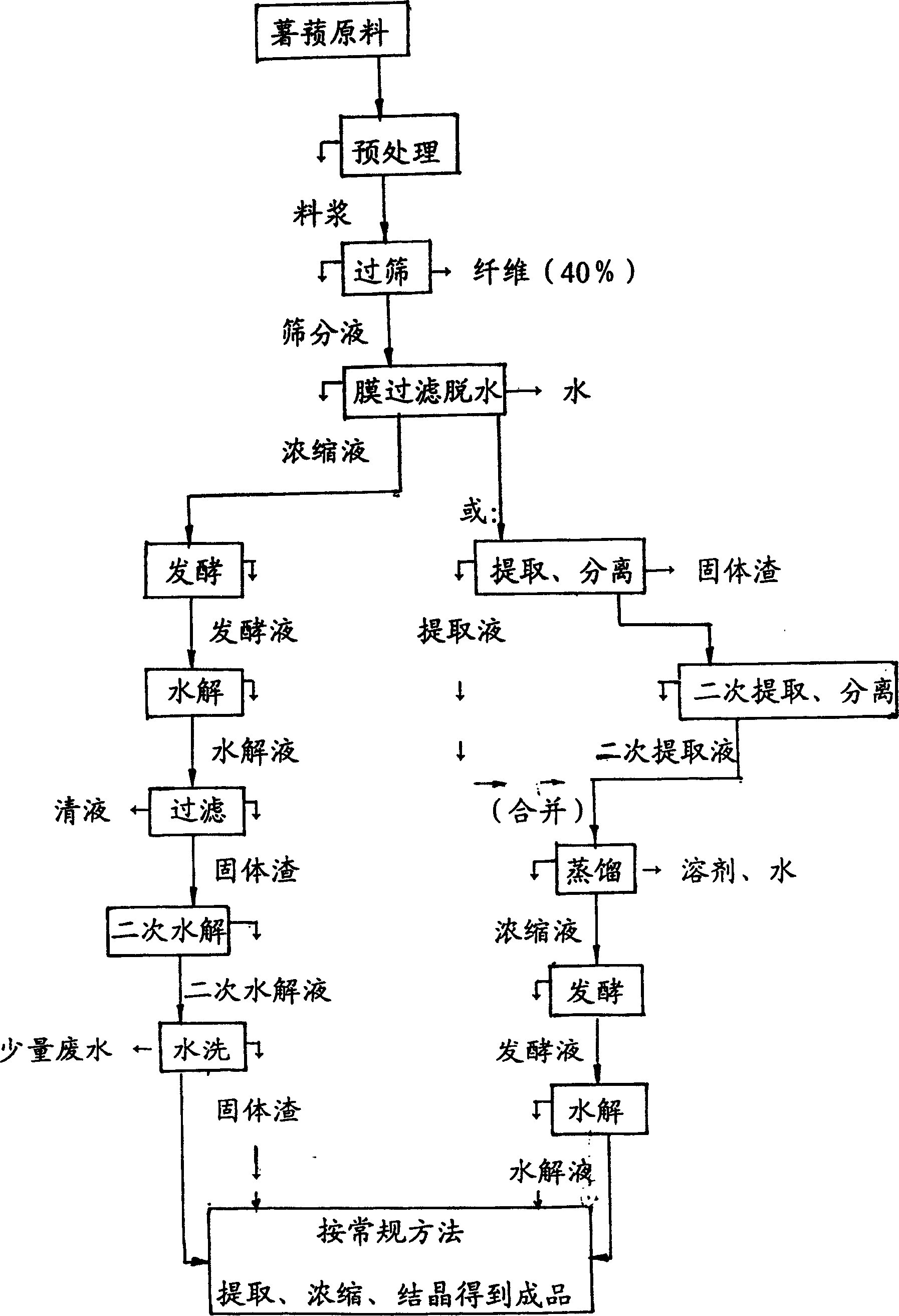Environment-protecting pollution-free production method of dioscorea saponin
A diosgenin, pollution-free technology is applied in the field of environmental protection and pollution-free production of diosgenin, can solve problems such as pollution, organic waste water discharge, environmental pollution, etc., and achieves the advantages of solving environmental pollution problems, reducing waste water discharge, and effectively utilizing resources. Effect
- Summary
- Abstract
- Description
- Claims
- Application Information
AI Technical Summary
Problems solved by technology
Method used
Image
Examples
Embodiment 1
[0029] The method comprises the steps in turn:
[0030] (1) Raw material pretreatment: wash the raw material with clear water, crush it with a hammer crusher, grind it into a slurry with a mill,
[0031] (2) Sieving: use a 40-200 mesh vibrating sieve to sieve about 40% of the plant fibers, and the sieves are used as organic fertilizers and fuels.
[0032] (3) Membrane filtration dehydration: use ultrafiltration membrane to cut off molecules with a molecular weight above 400, remove 70% of water, and form a concentrate,
[0033] (4) Fermentation: in the fermenter, under the condition of 25-45°C, ferment naturally for 48 hours,
[0034] (5) Hydrolysis: add hydrochloric acid or sulfuric acid to make the fermentation broth to pH<2, measure the pH value while adding hydrochloric acid or sulfuric acid during operation, generally choose pH=1, pH=1.5 or pH=1.8, pressurize 0.3Mpa, hydrolyze 0.5 hours,
[0035] (6) Filtration: the clear liquid is filtered out for comprehensive utiliz...
Embodiment 2
[0040] The method comprises the steps in turn:
[0041] (1) Raw material pretreatment: wash the raw material with clear water, crush it with a hammer crusher, grind it into a slurry with a mill,
[0042] (2) Sieving: Use a 40-200 mesh vibrating sieve to sieve about 40% of the plant fibers, and the sieves are used as organic fertilizers and fuels.
[0043] (3) Membrane filtration dehydration: use ultrafiltration membrane to cut off molecules with a molecular weight above 400, remove 70% of water, and form a concentrate,
[0044] (4) Extraction and separation: the concentrated solution can be extracted with 45-90% solvent methanol, ethanol, propanol, pentanol or acetone for 0.5 hour, and then centrifuged,
[0045] (5) Secondary extraction and separation: the solid slag separated by extraction can be extracted once with any of 45-90% solvent methanol, ethanol, propanol, amyl alcohol or acetone.
[0046] (6) Distillation: Merge the two extracts, and after the solvent is recovere...
PUM
 Login to View More
Login to View More Abstract
Description
Claims
Application Information
 Login to View More
Login to View More - R&D
- Intellectual Property
- Life Sciences
- Materials
- Tech Scout
- Unparalleled Data Quality
- Higher Quality Content
- 60% Fewer Hallucinations
Browse by: Latest US Patents, China's latest patents, Technical Efficacy Thesaurus, Application Domain, Technology Topic, Popular Technical Reports.
© 2025 PatSnap. All rights reserved.Legal|Privacy policy|Modern Slavery Act Transparency Statement|Sitemap|About US| Contact US: help@patsnap.com


